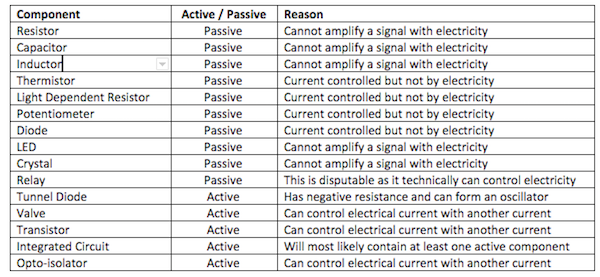Learn how to identify active and passive components and their use with circuits.
When electronic engineers use the term “active” and “passive,” they are referring to whether a component or circuit has the ability to increase a signal by using special components. In this article we’ll be exploring Active and Passive components and the specific roles they perform in circuits.
An active component, such as a transistor, can both control and amplify signals. A good way to distinguish an active component from a passive one is by measuring the net loss between input and output signals. For example, a transistor amplifier can convert an input signal’s microwatt units into an output in watts.
Examples of active components; a microcontroller, a power MOSFET, and an IC
Passive Components
Passive components are considered some of the easiest parts to manufacture and include resistors, inductors, and capacitors.
A passive component is capable of influencing the flow of an electrical current, but they’re unable to control them through another current or amplify their signals.
Passive components will always experience net loss. Inherent resistances indicate a decline in power between the input and output signals, as well as a decrease in amplification.
A transformer, for example, can boost the voltage of an incoming signal when in step-up configuration, but the transformer itself isn’t 100% efficient, which means the transformer’s output power will be equal to or less than the input and therefore passive. Interestingly, a circuit can only be considered an electronic circuit if it contains at least one active component.
Examples of passive components; a crystal, various capacitors and resistors, and other resistors
Identifying Active Vs. Passive Components
Sometimes, it can be difficult to identify whether a component is active or passive. For example, diodes are often mistaken as active components, but they’re actually passive. The general rule of thumb is to see if a component can control a current using another.
Another trick you can use is to identify a special component involved. For instance, in the case of a tunnel diode, which is specialized to operate at a fast rate. In its normal operating range, the diode exhibits negative resistance, while increasing input power reduces the current within it—which means it can be used as an oscillator—making it an active component.
A notable component users often disagree about is the relay. A relay consists of a switch activated by a coil and is used to switch high power sources with the use of a small input source. Relays are digital and could be considered active as an oscillator. However, they can be used to build logic gates and even computers, making them passive.
A table listing a variety of passive and active components






